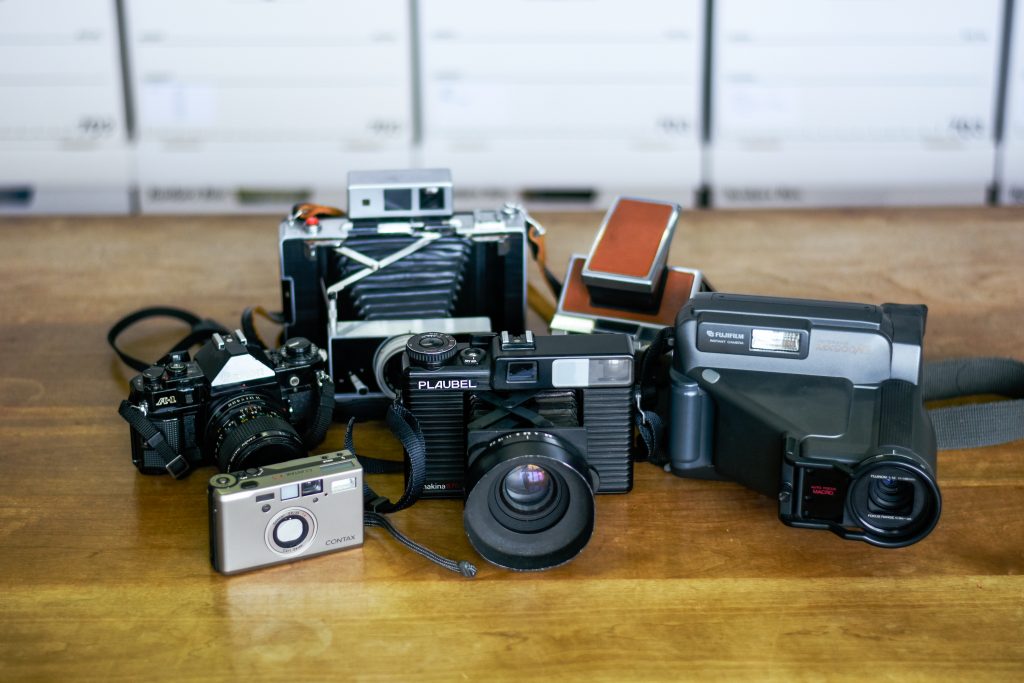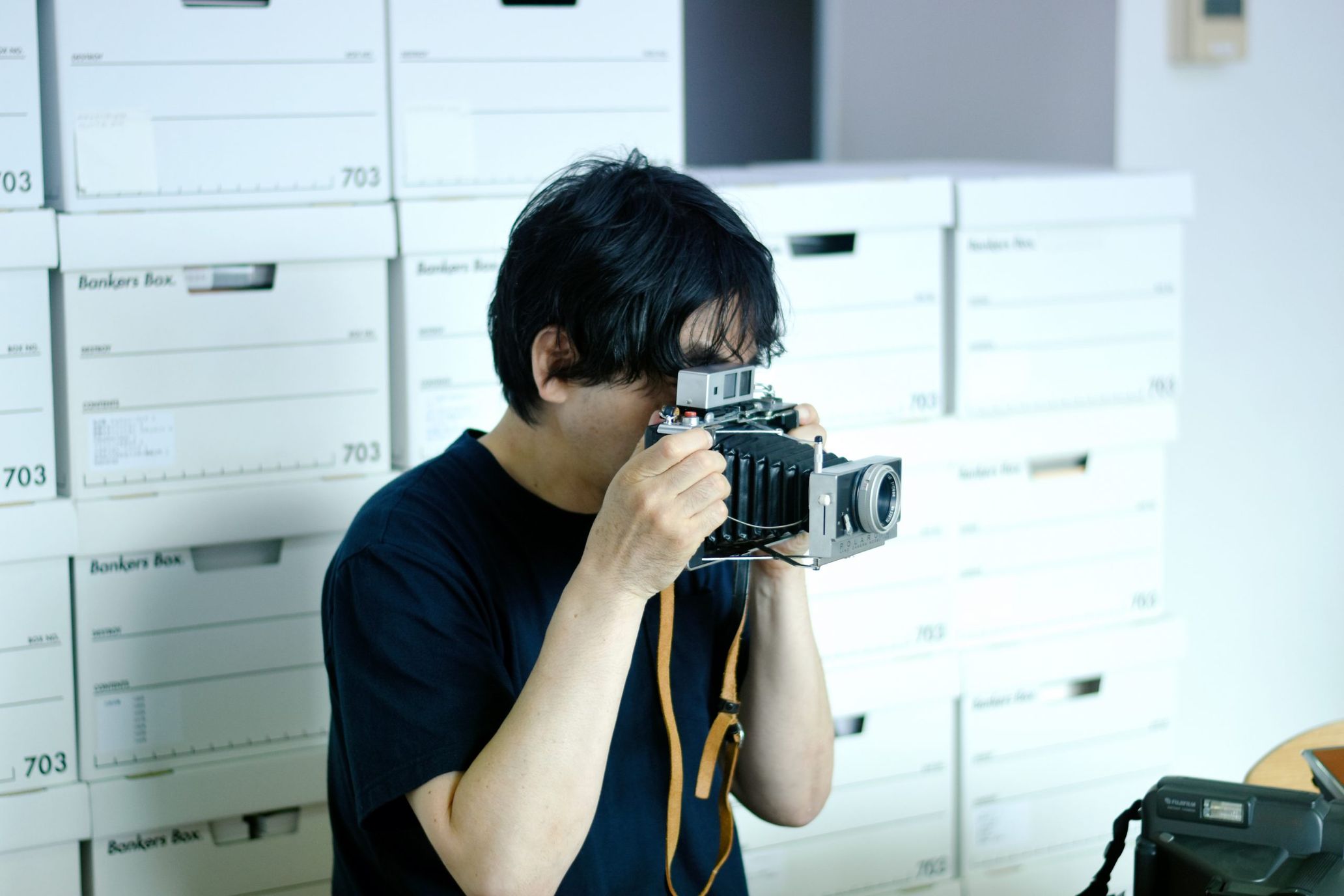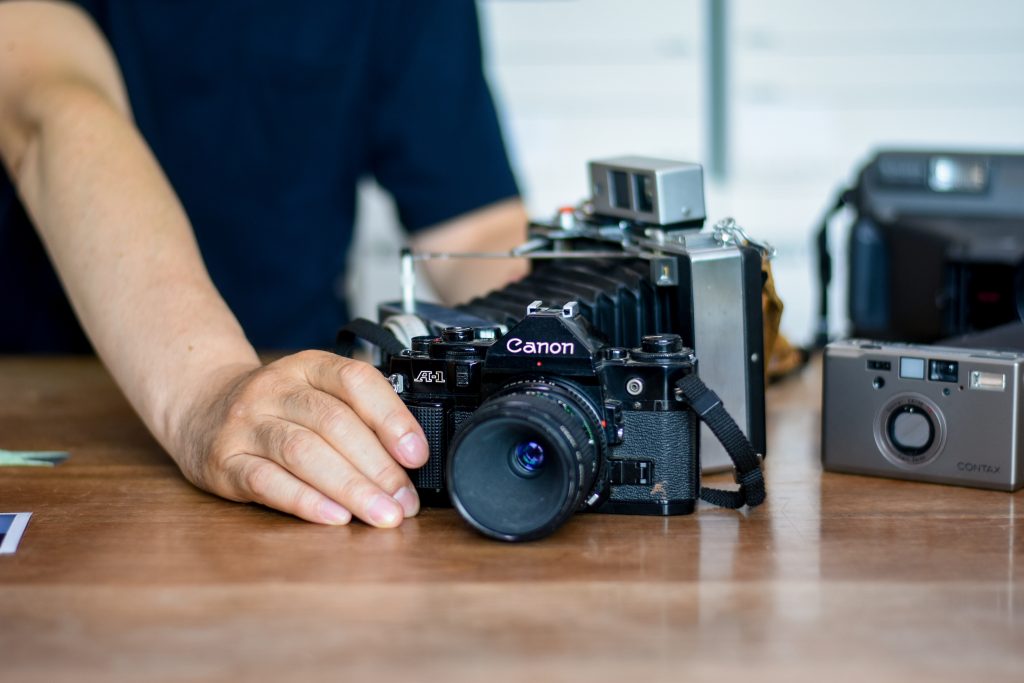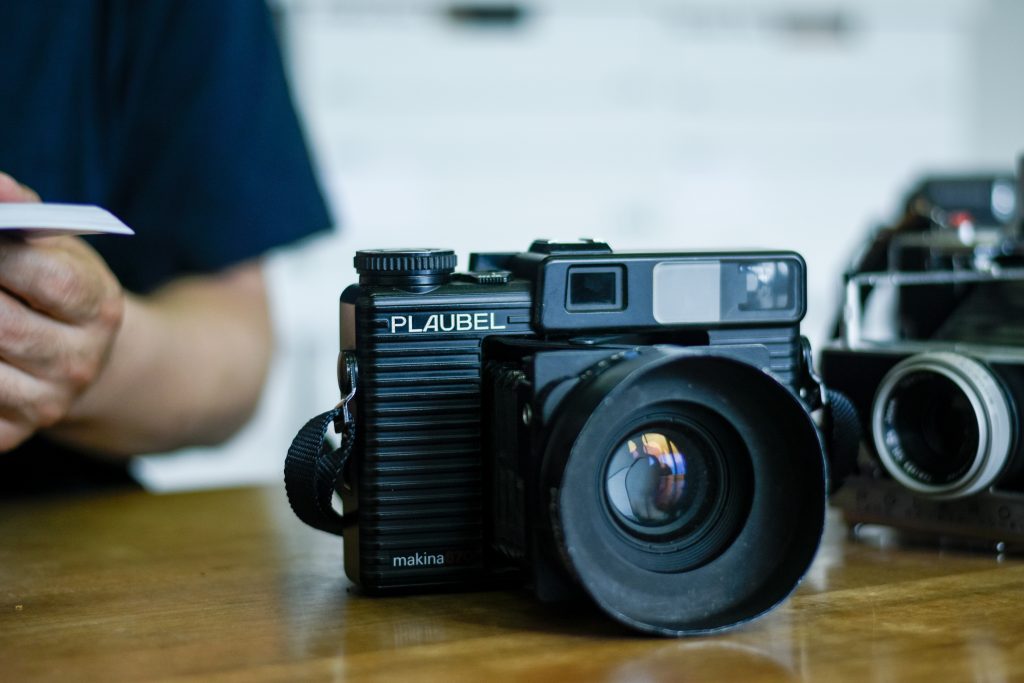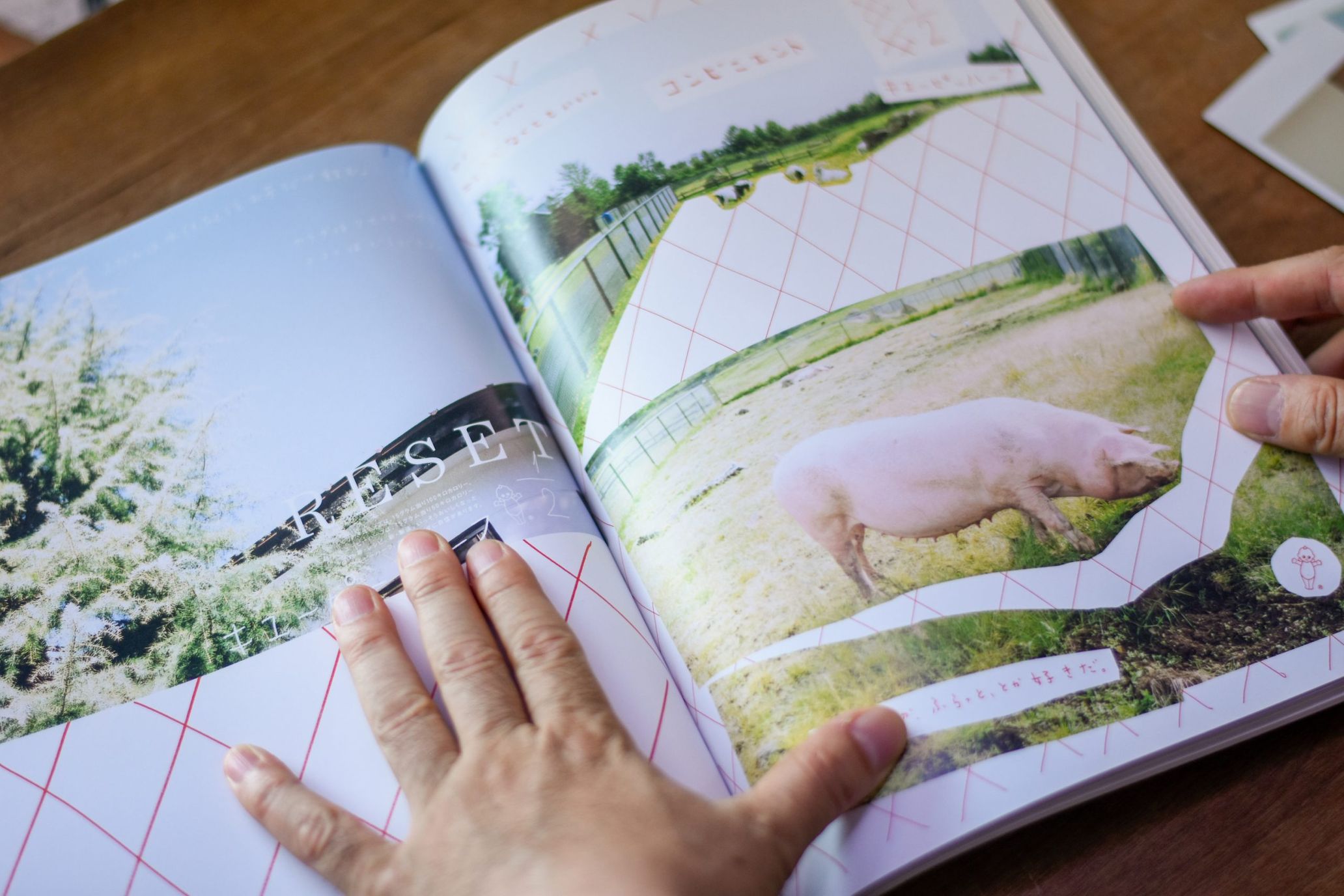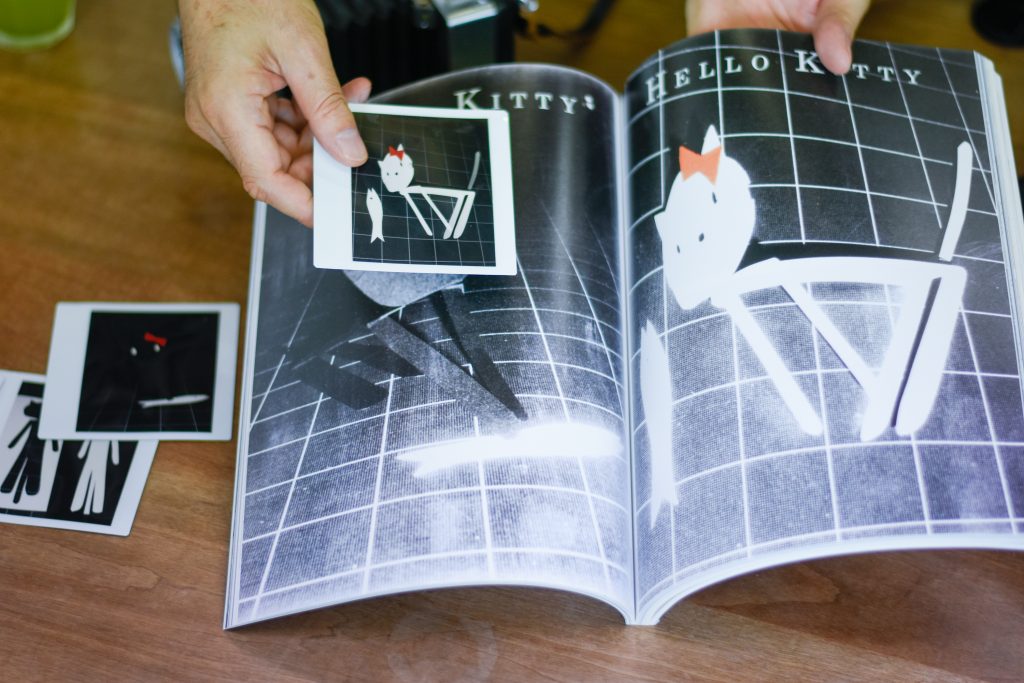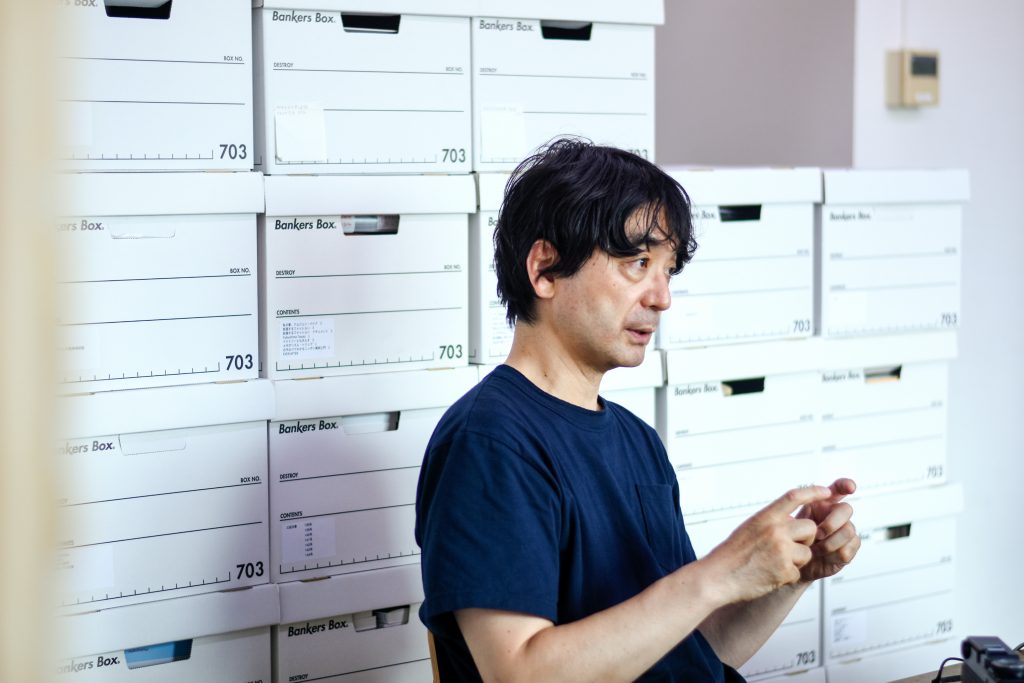Kazunari Hattori is an art director well known for advertisements for “Kewpie Half”. His favorite “analog cameras” are said to play a major role in his design works. Why did he get analog cameras? Hattori speaks about his favorites from instant to film cameras and the charm of analog cameras.
The world of photography leading up to design work
Introduction to analog cameras by senior workers from the photography department
–Please introduce your favorite items.
Kazunari Hattori (Hattori): These are analog cameras. They are not a specific model, but like “many different kinds of analog cameras”, ranging from instant cameras to film cameras.
–Do you like photography originally?
Hattori: I like taking pictures because photography is an act close to designing. When I was in college, I belonged to the photography club. It wasn’t that serious, though.
After graduating, I joined an advertising agency called Light Publicity, whose in-house photography department was well-known. In this company, designers and cameramen worked closely with each other. So while I was working, I became friends with the cameramans and had them take me to a used camera shops. At that time, there were many camera shops in Ginza. I went to the camera fair in Matsuya Ginza too. We went around the fair together and learned about this and that from them.
I bought “POLAROID LAND CAMERA MODEL 180” around that time.
–It’s an instant camera, right?
Hattori: That’s right. It’s an old camera that was already quite aged at the time I bought it, but you can adjust the exposure by turning the Dial and adjust the depth of focus too. You pull out the film after shooting to peel off the paper on the surface and wait for development.
In relation to film cameras, I obtained this “Canon A-1” immediately after joining the company. I got it from a person in the photography department. Or rather, he said, “I’ll lend you one. You don’t have to return it” (laugh). Attached is a 50mm macro lens. You can take pictures of flowers at a very close range.
The advertisement of “Kewpie Half” created with photos taken by Hattori himself
–Are these cameras used at work?
Hattori: When I was thinking about design, I used to take pictures like a trial shot, but of course I asked professional cameramen to do the actual shooting. However, advertising work for “Kewpie Half” created in 1998, I Copied instant films and tried using the photographic images I took as they were for the first time.
There are many staff involved in one project in advertising work, and the budget is plentiful. Of course, there are advantages in making works on such a large scale, but I rather felt like doing a kind of work with a sense of “I’ve done it just by myself” (laughs). At that time, I used “FUJIFILM INSTANT CAMERA FOTORAMA MX900 ACE”.
–Did you use images of an instant photo taken by yourself as an advertisement?
Hattori: That’s right. The image quality was not good, but it rather seemed interesting. Generally speaking, the viewfinder and actual frame of instant camera is out of alignment, but this Fuji Photorama is a single-lens reflex camera. It looks a little ugly (laughs), but I heard it is an excellent model that was used in medical settings at that time.
In this “Kewpie Half” advertisement, the photo had initially been featured in a small size, but in the following year, we used the enlarged photo of the cake floating in the blue sky. The image quality was poor, but it rather looked nice. The object depicted in the image was like a flying saucer, and that poor quality created the realistic atmosphere of it.
After that, I went to an overseas for shooting for the same advertising series, and what I bought for that was “PLAUBEL MAKINA 670”. I brought it to Iceland.
–This is also a film camera, right?
Hattori: Yes. It is a medium format film camera called Rokunana(6×7).
Until then, I used to use instant photos, but this time I wanted to collage landscape photos. Collaging rough images would make the overall impression too rough, so I wanted something with a slightly better image quality. That’s why I bought it.
I went to a zoo in Iceland, but there was no giraffe because it’s too cold. I took a picture of this pig there. The shooting team consisted only of three people, me and an assistant and a local coordinator. If there were a lot of people involved, it might have been difficult for me to say, “I’ll take a picture of a pig” (laugh).
Inspiration from chance
The camera is one of the design tools
–What is the advantage of taking pictures with an analog camera?
Hattori: Unlike digital, analog doesn’t go as expected and can’t check it soon. Rather, sometimes things that I did not intend may be incorporated well. I do the design work by feeling something from such a coincidence. Since the image from analog camera is a little out of the range you can imagine, so I think it’s interesting to work on it while controlling it.
In 2004, there was an event called “Kitty Ex.”, an exhibition commemorating the 30th anniversary of Hello Kitty’s birth. For that event, I also used scanned photo taken with instant camera to create my own work.
— As with the case of “Kewpie Half”, and was around 2000 the time when you used analog cameras the most frequently?
Hattori: That’s right. At that time, the world of design was more and more digitalized. I think I had a strong desire to incorporate such things as analog photographs, which are not straightforward, and lines drawn by hand.
I’ve been a little far away from analog cameras these days, but I’m reminded that analog is interesting. Also, in terms of digital, I would like to try if there is a camera that can capture images with the texture I want. Besides, I want an instant camera, but with “Cheki”, the finished size is a little too small.
Each person has his/her own way of working on design. In my case, I seldom have a concrete idea of final form toward which I go ahead beforehand. Rather, I somehow start to move my hand based on some vague idea and repeat trial and error from that point. I think again that analog cameras are very effective tools in such a trial-and-error method.
Kazunari Hattori
Art director. Born in Tokyo in 1964. After graduating from the department of design at Tokyo University of the Arts, he joined Light Publicity. He has been freelance since 2001. His works include advertisements for “Kewpie Half” and “Tanrei Green Label”. His anthologies include “Kazunari Hattori Graphics” (Seibundo Shinkosha).
Photography Shin Hamada
Text Maki Nakamura
Edit Kei Kimura
Translation Shinichiro Sato

